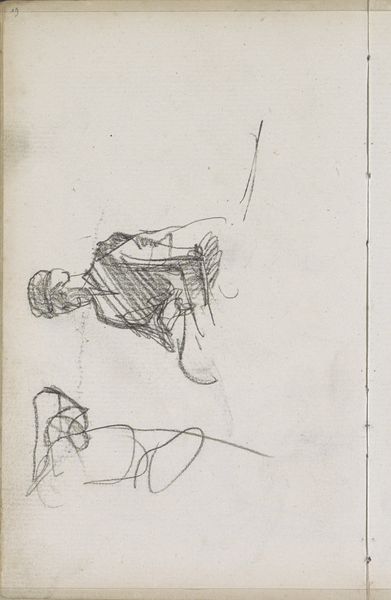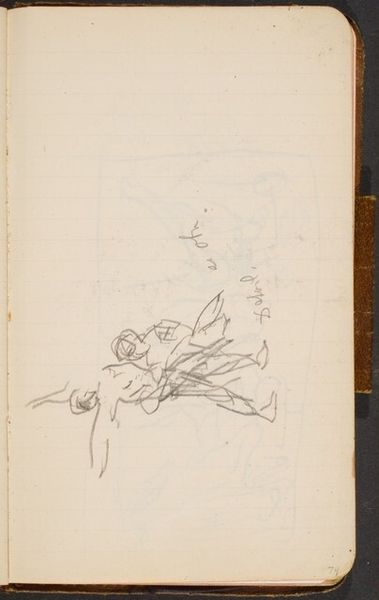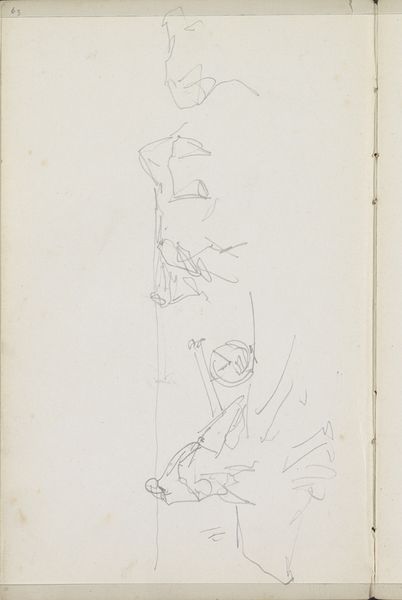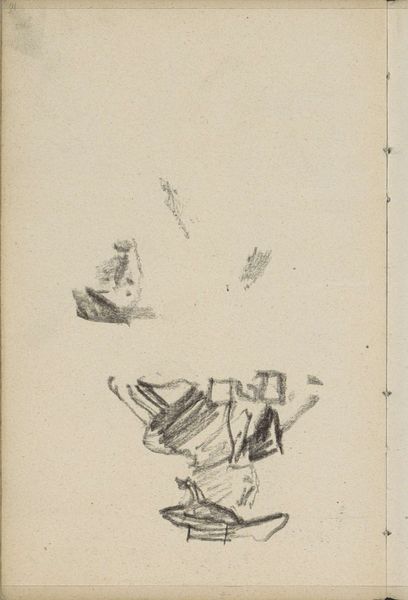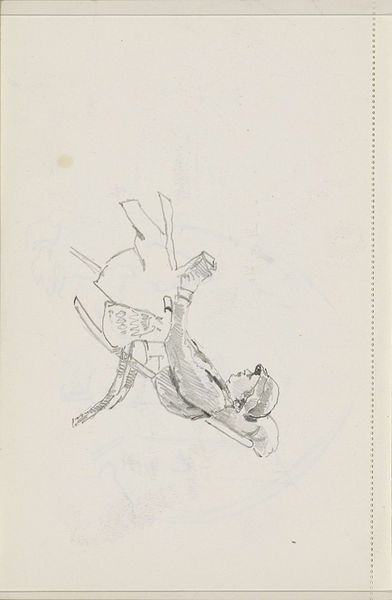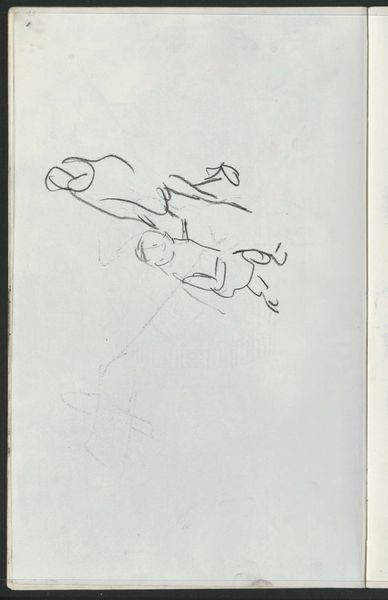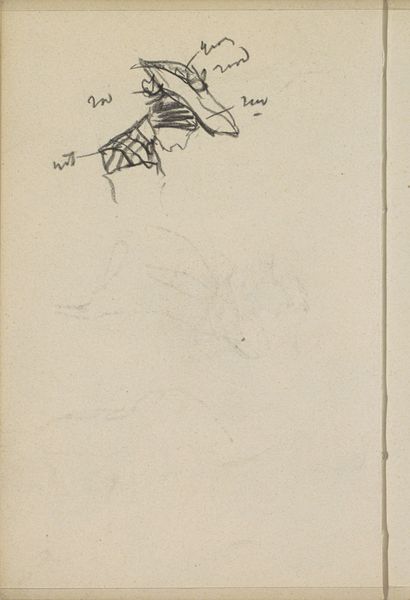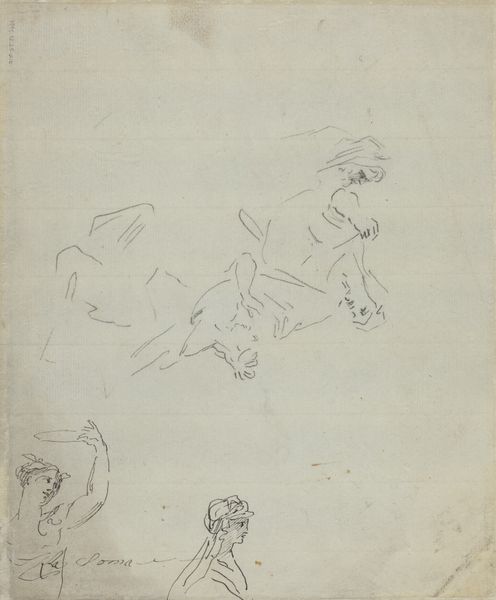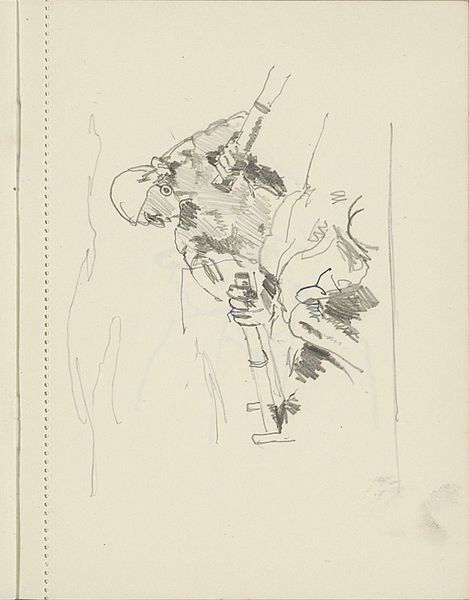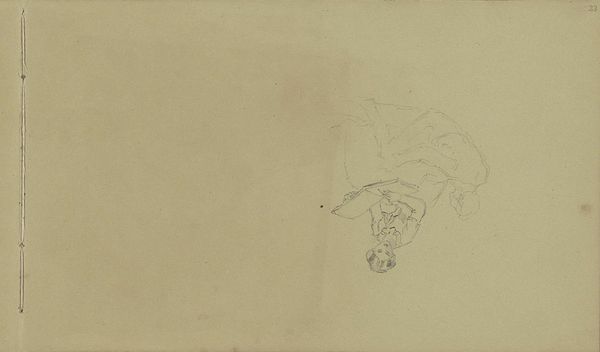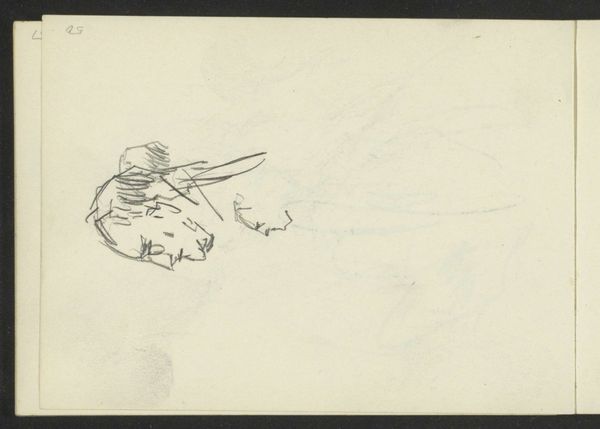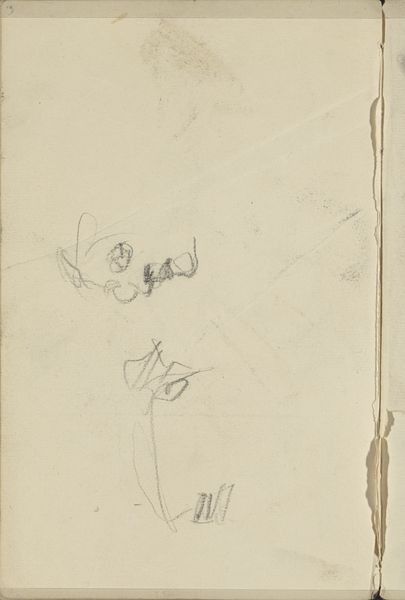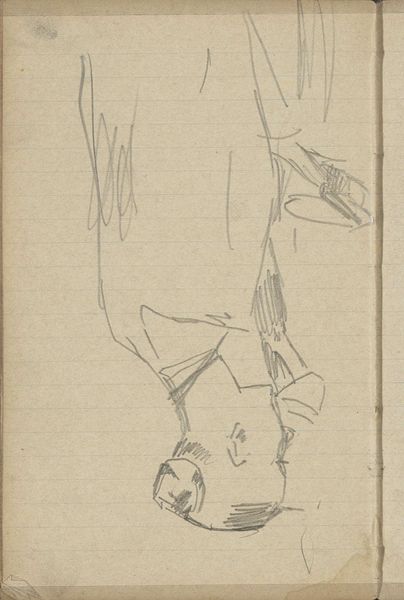
Copyright: Rijks Museum: Open Domain
Editor: Here we have Isaac Israels' "Sitting Figures and a Woman's Head" created between 1921 and 1922 using pencil. The sketch-like quality gives it a very immediate, almost intimate feel, as though we're peeking into the artist's sketchbook. What's your interpretation of this piece? Curator: It's interesting how you pick up on that intimacy. Looking at it historically, sketchbooks were crucial tools. This piece grants insight into the artist's process. The seeming informality clashes with the fact that the end-result will find its place into prominent institutions such as the Rijksmuseum, turning personal studies into publicly exhibited "art". How does this tension resonate with you? Editor: That's fascinating, the idea of a private moment becoming public property. I guess it makes me consider how much the value of art is shaped by where it ends up, not just by the artist's intention. Curator: Precisely. And consider Israels' context. He was working during a period of massive social and political upheaval. Did the function of creating portrait studies offer any respite or purpose in those turbulent times? Editor: Possibly! Maybe capturing these faces, even fleetingly, felt like preserving something important amidst the chaos. It also makes me wonder about the power dynamic between the artist and the sitter in those days, and how a quick sketch might either diminish or enhance it. Curator: Good point! Was it more democratic since Israels had his start depicting everyday life rather than the well-to-do, therefore creating portraits accessible to the common population through prints and exhibitions? These 'common people' portrait styles are something to consider as the art market slowly incorporates new artists, institutions and patronage... Editor: That's a compelling view that I hadn't considered! It’s all more thought-provoking. Thanks for the insightful perspective.
Comments
No comments
Be the first to comment and join the conversation on the ultimate creative platform.
